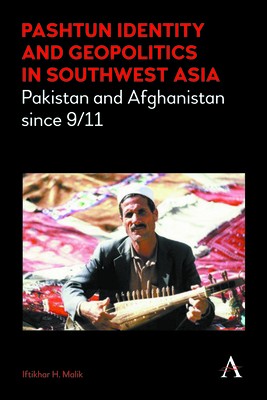
- We will send in 10–14 business days.
- Author: Iftikhar H Malik
- Publisher: Anthem Press
- ISBN-10: 1783084944
- ISBN-13: 9781783084944
- Format: 15.2 x 22.9 x 1.8 cm, hardcover
- Language: English
- SAVE -10% with code: EXTRA
Pashtun Identity and Geopolitics in Southwest Asia (e-book) (used book) | bookbook.eu
Reviews
Description
Pashtun Identity and Geopolitics in Southwest Asia' brings together Pakistan and Afghanistan as two inseparable entities by investigating areas such as the evolution and persistence of the Taliban, quest for Pashtun identity, the ambivalent status of the tribal region and the state of civic clusters on both sides. In addition to their relations with the United States and the EU, a due attention has been devoted to regional realties while looking at relations with India and China. The study explores vital disciplines of ethnography, history, Islamic studies, and international relations and benefits from a wide variety of source material. The volume takes into account the salient subjects including political Islam, nature and extent of violence since 9/11, failure of Western policies in the region, the Drone warfare, and the emergence of new regimes in Kabul, Islamabad and Delhi offering fresh opportunities as well as new threat perceptions.
EXTRA 10 % discount with code: EXTRA
The promotion ends in 18d.13:27:40
The discount code is valid when purchasing from 10 €. Discounts do not stack.
- Author: Iftikhar H Malik
- Publisher: Anthem Press
- ISBN-10: 1783084944
- ISBN-13: 9781783084944
- Format: 15.2 x 22.9 x 1.8 cm, hardcover
- Language: English English
Pashtun Identity and Geopolitics in Southwest Asia' brings together Pakistan and Afghanistan as two inseparable entities by investigating areas such as the evolution and persistence of the Taliban, quest for Pashtun identity, the ambivalent status of the tribal region and the state of civic clusters on both sides. In addition to their relations with the United States and the EU, a due attention has been devoted to regional realties while looking at relations with India and China. The study explores vital disciplines of ethnography, history, Islamic studies, and international relations and benefits from a wide variety of source material. The volume takes into account the salient subjects including political Islam, nature and extent of violence since 9/11, failure of Western policies in the region, the Drone warfare, and the emergence of new regimes in Kabul, Islamabad and Delhi offering fresh opportunities as well as new threat perceptions.


Reviews